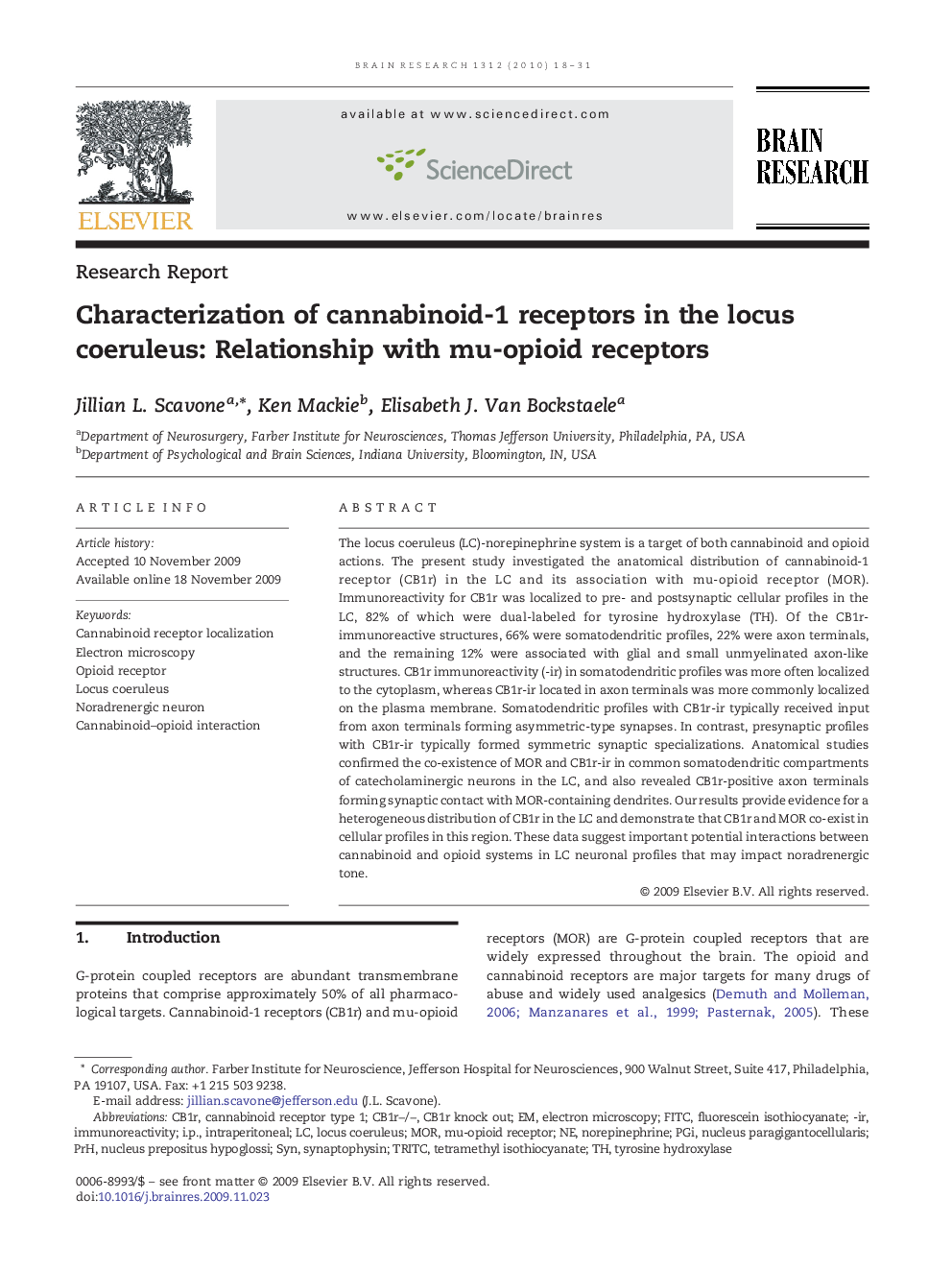| Article ID | Journal | Published Year | Pages | File Type |
|---|---|---|---|---|
| 4327501 | Brain Research | 2010 | 14 Pages |
The locus coeruleus (LC)-norepinephrine system is a target of both cannabinoid and opioid actions. The present study investigated the anatomical distribution of cannabinoid-1 receptor (CB1r) in the LC and its association with mu-opioid receptor (MOR). Immunoreactivity for CB1r was localized to pre- and postsynaptic cellular profiles in the LC, 82% of which were dual-labeled for tyrosine hydroxylase (TH). Of the CB1r-immunoreactive structures, 66% were somatodendritic profiles, 22% were axon terminals, and the remaining 12% were associated with glial and small unmyelinated axon-like structures. CB1r immunoreactivity (-ir) in somatodendritic profiles was more often localized to the cytoplasm, whereas CB1r-ir located in axon terminals was more commonly localized on the plasma membrane. Somatodendritic profiles with CB1r-ir typically received input from axon terminals forming asymmetric-type synapses. In contrast, presynaptic profiles with CB1r-ir typically formed symmetric synaptic specializations. Anatomical studies confirmed the co-existence of MOR and CB1r-ir in common somatodendritic compartments of catecholaminergic neurons in the LC, and also revealed CB1r-positive axon terminals forming synaptic contact with MOR-containing dendrites. Our results provide evidence for a heterogeneous distribution of CB1r in the LC and demonstrate that CB1r and MOR co-exist in cellular profiles in this region. These data suggest important potential interactions between cannabinoid and opioid systems in LC neuronal profiles that may impact noradrenergic tone.
